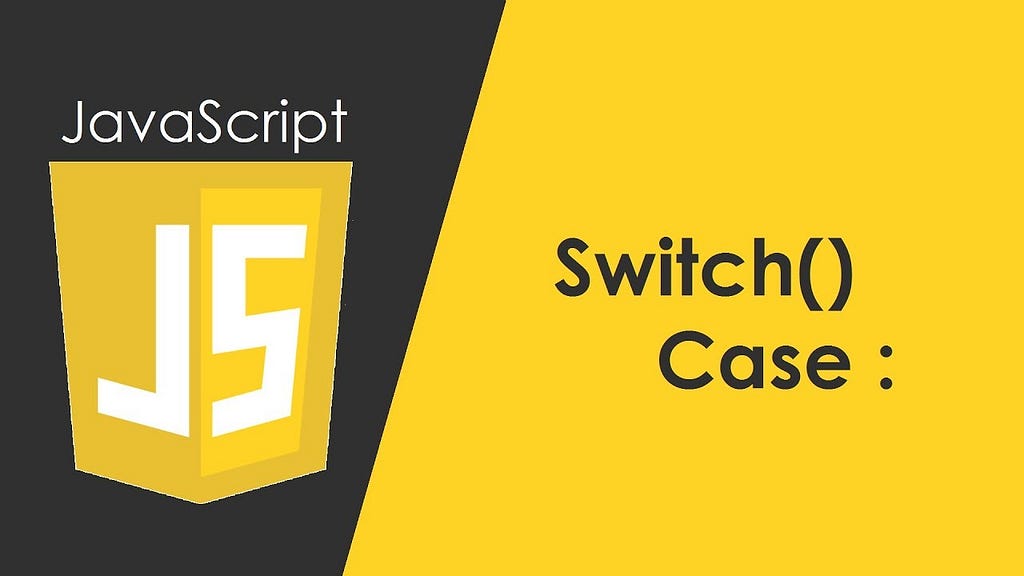Latest news about Bitcoin and all cryptocurrencies. Your daily crypto news habit.
In this short article, I will introduce you to JavaScript switch cases and how to use them with practical examples.
This article will explain better with more practical examples to help you understand switch cases in depth.
Prerequisites.
- Basic JavaScript knowledge
- Code editor
- Web Browser
- Your brain :)
A switch statement can basically replace multiple if checks in JavaScript.
It gives a more descriptive way to compare a value with multiple variants.
The Switch Syntax
The switch has one or more case blocks and an optional default case.
switch(x) { case 'value1': // if (x === 'value1') //code here [break] case 'value2': // if (x === 'value2') //code here [break] default: //code here [break]}- The value of x is checked for strict equality to the value from the first case (that is, value1) then to the second (value2) and so on.
- If the equality is found, switch starts to execute the code starting from the corresponding case, until the nearest break(or until the end of switch).
- If no case is matched then the default code is executed (if it exists).
Some few real examples
- Simple Play & Pause Switch
The switch statement can be used for multiple branches based on a number or string:
switch (movie) { case 'play': playMovie(); break; case 'pause': pauseMovie(); break; default: doNothing();}If you don’t add a break statement, the execution will "fall through" to the next level. It's essential that you deliberately label the fall through with a comment if you really meant it to aid debugging:
switch (movie) { case 'play': // fallthrough case 'pause': pauseMovie(); break; default: doNothing();}The default clause is optional. You can have expressions in both the switch part and the cases if you like; comparisons take place between the two using the === operator:
switch (3 + 7) { case 5 + 5: correct(); break; default: neverhappens();}- Simple Maths Calc Switch
let average = 2 + 6;switch (average) { case 4: alert( 'Too small' ); break; case 8: alert( 'Exactly!' ); break; case 10: alert( 'Too large' ); break; default: alert( "Incorrect values!" );}Here the switch starts to compare average from the first case variant that is 4. The match fails.
Then 8. That’s a match, so the execution starts from case 8until the nearest break.
If there is no break then the execution continues with the next case without any checks.
Here is an example without break:
let average = 2 + 6;switch (average) { case 4: alert( 'Too small' ); case 8: alert( 'Exactly!' ); case 10: alert( 'Too big' ); default: alert( "Incorrect values!" );}In the example above we’ll see sequential execution of three alerts:
alert( 'Exactly!' );alert( 'Too big' );alert( "Incorrect values!" );
- getDay() method switch case
The getDay() method returns the weekday as a number between 0 and 6.
Sunday=0, Monday=1, Tuesday=2 , Wednesday=3, Thursday=4, Friday=5, Saturday=6
This example uses the weekday number to calculate the weekday name:
switch (new Date().getDay()) { case 0: day = "Sunday"; break; case 1: day = "Monday"; break; case 2: day = "Tuesday"; break; case 3: day = "Wednesday"; break; case 4: day = "Thursday"; break; case 5: day = "Friday"; break; case 6: day = "Saturday";}The result of day will be the current weekday in day format
PS: This would change according to when you’re reading this article
I wrote this artcle on 01/04/2019 which is a Friday, so the result would be:
Friday
The default Keyword
The default keyword specifies the code to run if there is no case match, more like an else statement:
switch (new Date().getDay()) { case 6: text = "Today is Saturday"; break; case 0: text = "Today is Sunday"; break; default: text = "Its not weekend yet!";}The result of text will be:
Its not weekend yet!
The default case does not have to be the last case in a switch block:
switch (new Date().getDay()) { default: text = "Its not weekend yet!"; break; case 6: text = "Today is Saturday"; break; case 0: text = "Today is Sunday";}If default is not the last case in the switch block, remember to end the default case with a break.
Conclusion
There are so many practical examples of switch cases, you can head over to google.com and run a quick search for more switch cases examples.
If this article helped you, show it by clapping, sharing or dropping some comments :)
Thanks for reading!
Check out my blog where I write articles on Web and Front-end Development.
Introduction to JavaScript Switch Cases was originally published in Hacker Noon on Medium, where people are continuing the conversation by highlighting and responding to this story.
Disclaimer
The views and opinions expressed in this article are solely those of the authors and do not reflect the views of Bitcoin Insider. Every investment and trading move involves risk - this is especially true for cryptocurrencies given their volatility. We strongly advise our readers to conduct their own research when making a decision.
